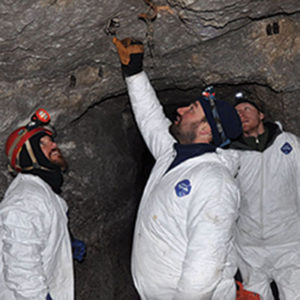BRI Studies: Inventory and Population Monitoring
BRI researchers use a variety of survey and monitoring techniques to: assess wildlife health issues; estimate population sizes or trends; describe distributions; and identify responses to climate change. From the Arctic to the Tropics, successful surveys and monitoring projects are founded on a careful selection of field methods to achieve project goals and require an intimate knowledge of the biology and ecology of the focal species.
At BRI, we are highly skilled in the use of a broad range of surveillance methods—from traditional population counts to innovative high-tech remote sensing systems- to survey and monitor wildlife in a variety of ecosystems. From decades of experience, we also know that the implementation of successful surveys and monitoring projects relies on clear research objectives used to inform decision making and ecosystem management.
Sample Projects

Surveying and monitoring often require canvassing large areas from a plane, rappelling down a frozen waterfall to reach a cave where bats hibernate, or carrying a canoe for miles to remote lakes where loons breed. BRI biologists are well trained to handle adverse field conditions.
The ability to gain insight into migratory patterns, local demographics, and other population-related metrics is one of BRI’s premier areas of expertise.
Specific experience includes:
- Conducting waterbird and raptor surveys using aerial and ground-based visual methods
- Conducting songbird point counts and transect surveys
- Conducting bat breeding, migrations, and hibernacula surveys
- Conducting bird, mammal, jish, and invertebrate threatened and endangered species surveys
- Conducting surveys for multiple taxonomic groups using distance-protocol boat surveys, visual aerial surveys, and high definition video aerial surveys
- Conducting bird and bat passive acoustics and video monitoring
Case Study: River Point Bird Observatory

Migratory connectivity- the links between northern breeding sites and southern nonbreeding areas- is a critical component to understanding how environmental threats affect migratory songbirds. BRI’s River Point Bird Observatory has become a valuable resource for interns, graduate students, educators, collaborating biologists, and visiting scientists in the development of new research studies on migratory songbirds. In addition to banding, we document bird observations using eBird.
Ongoing songbird studies include:
- Migratory songbird breeding monitoring
- Disease monitoring
- Contaminant exposure
- Tracking individuals



